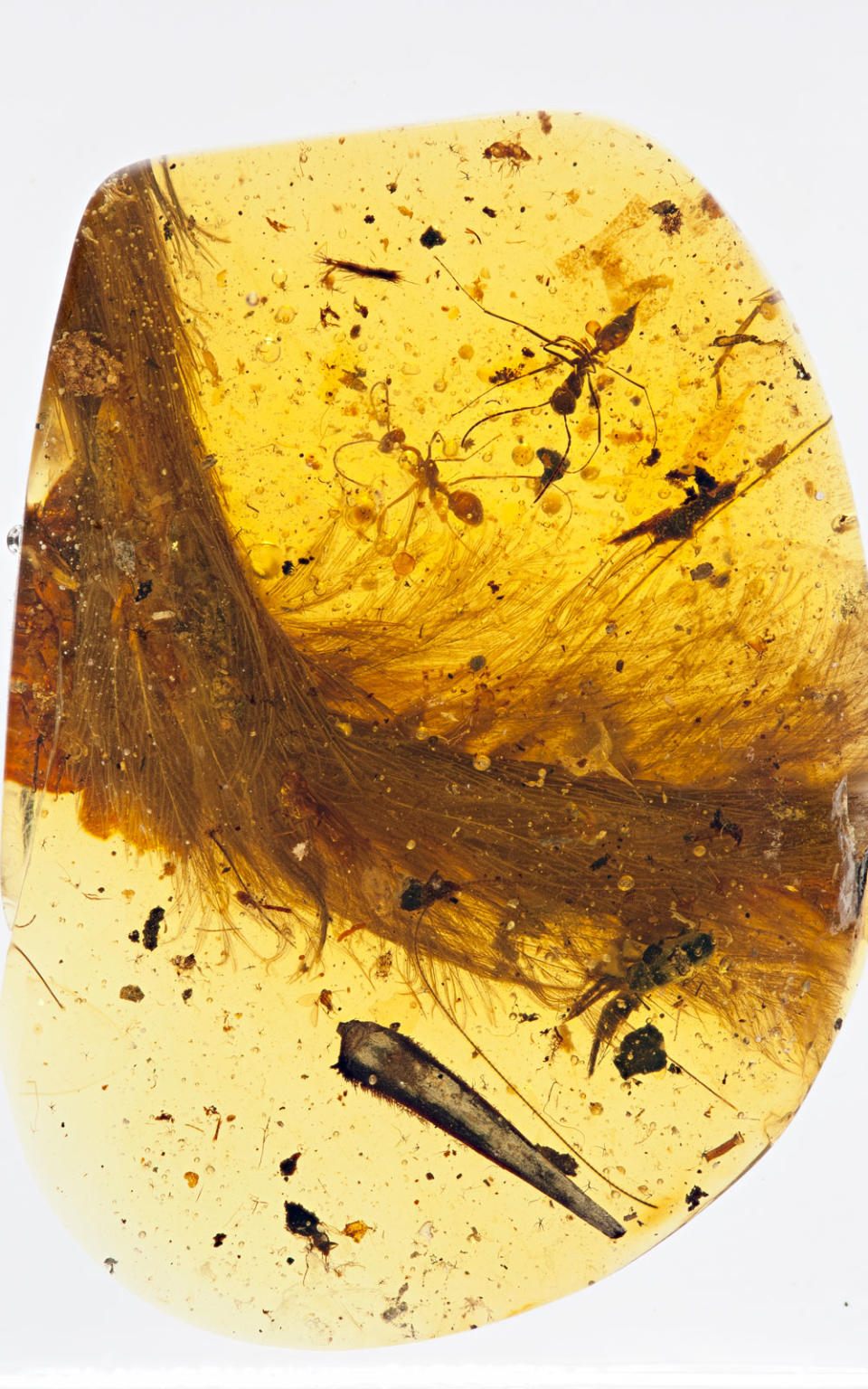This Dinosaur Tail Was Preserved in Amber for 99 Million Years
Scientists have discovered the first fully preserved dinosaur tail in a piece of amber, belonging to a 99-million-year-old creature.
“This is the first time we've found dinosaur material preserved in amber,” Ryan McKellar, paleontologist at the Royal Saskatchewan Museum in Canada and co-author of the paper published in Current Biology, told the BBC.
The tail includes articulated vertebrae, soft tissue, and even feathers, making it such a rare find. Captured in a piece of amber about the size of an apricot, the sample allows paleontologists a glimpse into the evolutionary differentiation between dinosaur feathers and bird feathers, National Geographic reported. The presence of soft tissue and feathers also allows better insight into the biology of dinosaurs than fossils alone.

Measuring about 1.4-inches long, the tail comes from a dinosaur that lived during the Cretaceous period. Researchers deduced that the dinosaur was likely a juvenile, based on the size of the specimen. The team was able to identify the fragment using specialized microscopy and photography techniques, according to a press release from the Royal Saskatchewan Museum.
The amber initially came from a mine in Myanmar, and the lead researcher, Lida Xing from the China University of Geosciences in Beijing, discovered it at an amber market in the Kachin state in Myanmar. A local artisan had already begun to shape it into a piece of jewelry. Recognizing the potential scientific value of the piece, Xing rushed to have it examined.
Researchers have several theories as to how the dinosaur remained so well preserved over millions of years.
“The close contact between the skin and surrounding amber, paired with the mummified external appearance of the skin where it has shriveled across the surface of the vertebrae, suggest one of two scenarios,” wrote the researchers in their paper. “Either the tail bearer was dead and partially desiccated before encapsulation, or else it rapidly dried due to resin interactions.”

